
For an academy of fine arts that requires a “hands-on” experience for most majors, the difficulties confronted by the 2022 CAFA Graduation Exhibition were almost unavoidable. In the speech on the homepage of the online degree shows, Fan Di’an, President of Central Academy of Fine Arts (abbr. CAFA) mentioned the challenges brought about by changes owing to the pandemic: “Creating at home means that our students did not have sufficient space and proper conditions, such as graduates from the Printmaking Department could not get into printmaking facilities on the campus, graduates from the Department of Sculpture, Department of Mural Painting and other majors found it difficult to create works using hard materials, those from the School of Design, School of Architecture cannot make models, and some students cannot take home the first drafts they had painted at school before the winter vacation...”
Optimistically speaking, facing the challenges head-on may also objectively make this graduation season in 2022 be in line with the motto of CAFA, “Penetrating All Subtleties, Reaching the Breadth and Greatness” [1] (it can also be translated as “Omitting none of the more exquisite and minute points which it embraces, While seeking to carry it out to its breadth and greatness”). [2] The “subtle” point lies in how young students can break through the constraints of objective conditions and develop the ability and creative wisdom to solve practical problems by being broadminded, and further reach a larger world and a brighter future. Undoubtedly, this constitutes an important highlight of this graduation exhibition.

The Interface of CAFA Digital Campus Inspired from a Concrete One
Penetrating All Subtleties
Since it has become an extravagant hope to get a real sense of the scene, the choice of this online graduation season, on the one hand was based on the “quantity”. A fairly rough calculation can be made: The Degree Show presented by the CAFA Graduate School was officially launched on May 20, the number of exhibitors reached the highest in nearly 10 years, and a total of over 3,000 works by 476 doctoral and postgraduate students were exhibited, with an average of 6 pieces per person. Regarding the Degree Show for Undergraduates which was officially launched on May 25, the number of works reached more than 10,000, and 874 undergraduate graduates exhibited an average of 11 works each.
The overall presentation is an online display, so that each graduate has a micro-personal website based on the categories from departments and studios. Focusing on the works, the graduation exhibition also shows a tendency to rely more on textual explanations and auxiliary videos to convey the temperament of the works, and it does provide more opportunities for a sequence in the display of works for graduates with a display space for creative thinking paths that are difficult to provide in offline exhibitions. In the virtual world of the 2022 Graduation Season, the perceptual vibration of art will inevitably give way to a more rational experience in viewing exhibitions. This is a form of rationality that belongs to the attributes of long-term, portable and rewritable databases, which conveys a trial with online exhibitions taking the maximum advantage of design consideration.


Relying on the spectacular display of thousands of micro “personal websites”, the online exhibition has a decentralized viewing method that can be a “carousel”, and the audience can choose the starting point, which more or less alleviates the concern of “leading position” with the offline exhibitions. As comprehensive presentations seem to be more important than the leading position, and a graduation exhibition that is viewed in a panoramic view leaves the mental and physical stress of browsing a huge electronic photo album to the audience.
The good news is that the limitations of the exhibition length and exhibition space in previous years no longer exist. When each piece of work is limited to a fixed-size PNG format, the volume of the work cannot display its charm in the virtual viewing method based on the online exhibition. The advantages and disadvantages of the online exhibition make some attitudes that tend to be “delicate” first reflected in the selection of the volume for the graduation creation, when the volume, texture, weight, smell and other material factors of the works are sealed by the online display and finally framed as the size of the screen, it is a pity that for sculptures, installations, other mixed media and most painting types cannot display their advantages (after all, graduates from various majors cannot all become Internet artists within half a semester), and the unstable logistics and lack of hardware caused by the pandemic have made some graduates choose “conservative therapy” in their graduation creations—they refined and expanded their research directions during their study, or considered the use of more routine materials and these might be easier to control, which can be found more concentrated and reflected in the works from the Department of Sculpture, Printmaking Department, School of Experimental Art, Department of Mural Painting and so on.

Tian Jianxin, “Metamorphosis”, Multiple pieces, Different sizes, Kitchen utensils, lampshades, bricks, benzene board, gypsum, etc.

Jin Yu, “Scale”, 180cm×180cm×200cm, Mechanical device, tape measure, ceramics

Zhang Haitong, “Passage Paradise Project”, 3m×2.5m×2m, Paper packaging boxes, packaging bags, ink and wash
Materials that are easier to control, media are more accessible, and even “sourced materials on the spot” have become the creative choices of some 2022 graduates, including mixed media creations based on everyday objects such as cardboard boxes, wool, their own hair, magazines, and waste products. Oil paintings, acrylics, digital prints, videos, new media, etc. that are easier to operate under the constraints of poor logistics, factory shutdowns, and limited venues are also included. However, large-scale works have not completely disappeared, but compared with previous years, the overall volume of creations becomes more delicate and compact.

Huang Xiyu, “i novel”, Dimension variable, mixed media

Meng Na, “Infinity Approaching Zero”, 180×180cm, magazine collage

Yu Mingtao, “Lyric Poets in the Developed Era”, Installation: 220×90×250cm; Video 1: 3′30″; Video 2: 2′30″, Metal, mechanical installations, ready-made products, mixed media
Zhang Wei, Director of CAFA Department of Sculpture, expressed a similar observation in an interview with the media, “The graduation works also reflect an interesting phenomenon, that is, some of the small-size works by the students are very exquisite. Under normal circumstances, they can use better materials and venues, everyone may work on large-scale works, instead of focusing on small works, however the pandemic enables the students to calm down and dig into the depths.”[3]

Huang Hong, “Primary School Textbook” Research and Creation Plan, 300cm×300cm (variable size), Porcelain
In addition, to adapt to the presentation form of the online exhibition and facilitate subsequent Internet dissemination and sharing, many graduates chose to focus on the works and spontaneously shot more specific and in-depth video content to show, they jointly explore more diverse, detailed and perceptible possibilities for the display of their graduation creations.
Reaching the Breadth and Greatness
“Obtaining materials from local sources” means that creations are not only limited to materials, but it also radiates to the thematic level of graduation works. If observing the themes of this graduation season, it can be found that a large number of themes originated from the daily life of young students, family life and field trips to their hometowns. So, how to achieve a deeper and even broader artistic expression with a narrower physical trajectory, a closer distance, and a smaller creative entry point?

An Sitong, “12 Water Stops”, video, dimensions variable, water, balloons, umbrellas, inflatable tubes, ropes, rain boots, etc.
It can be seen that these inspirations from daily life and the earth-shaking changes in space caused by the pandemic have promoted the Class of 2022 to show a deeper interest in space through their creations. Maybe it is because of the large amount of quiet time in home life which allows people to return to themselves and inspires research on the daily space around them.
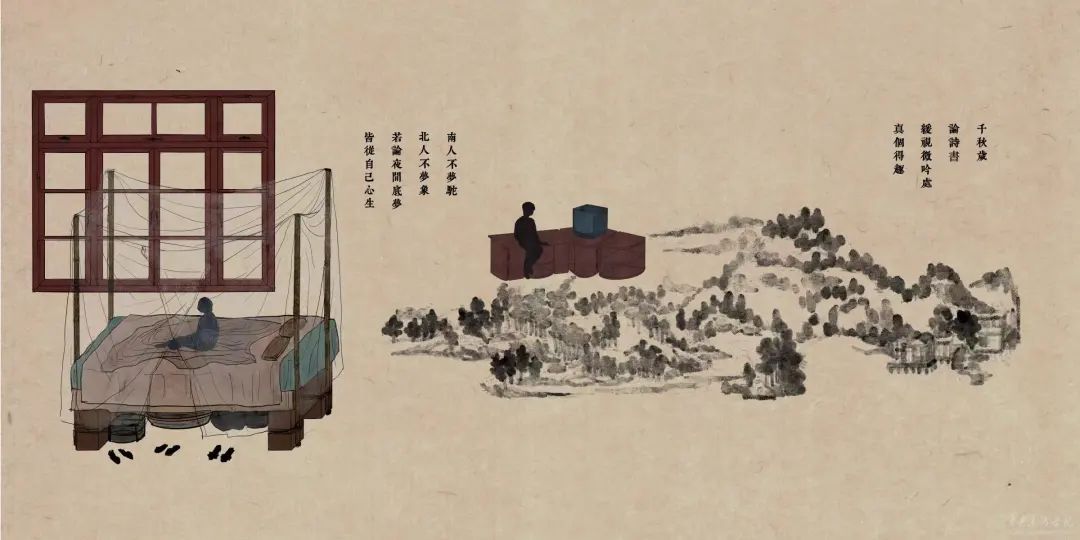

Dong Yanran, “Walking the Road Slowly”, 46×23cm, Rice paper, digital printing

Wang Xin, “Family”, 60×100cm, Oil on canvas
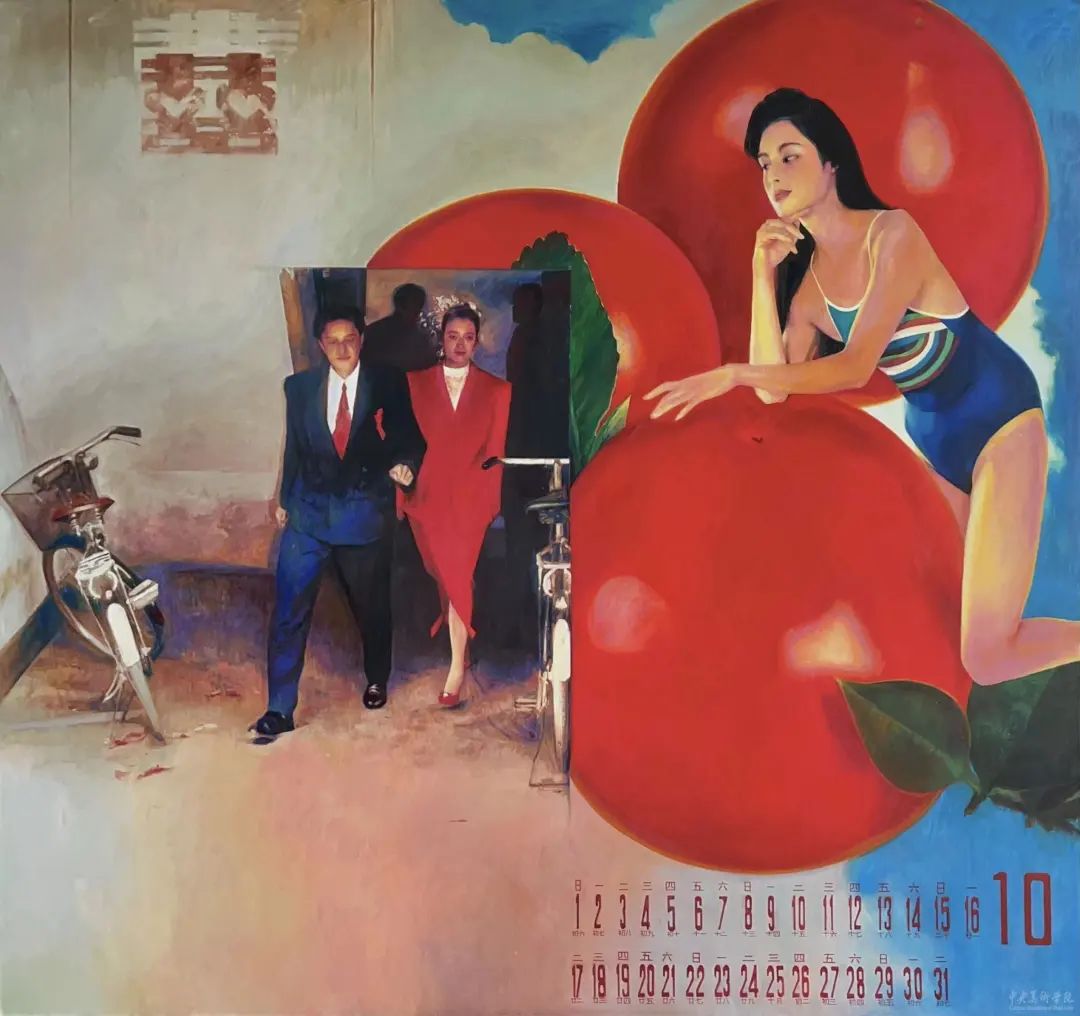
Sun Rui, “Red”, 150×160cm, Oil on canvas

Mi Zijian, “Ili” series, 200×260cm, Oil on canvas
Perhaps as the segmentation and obstruction in the surrounding environment always occur, so this triggers the creators to think deeply about of public spaces such as streets and cities. Discussions on space issues began to appear in this year’s graduation creations in a variety of ways, such as everyday life, sensibility, philosophical thinking, and even fiction. And they often show the characteristics of being intertwined with other issues, for the openness and tolerance of “space” itself, the creators have obtained a certain freedom, making it very natural to be related to memory, family, body, women, social issues and other topics produce substantial convergence.
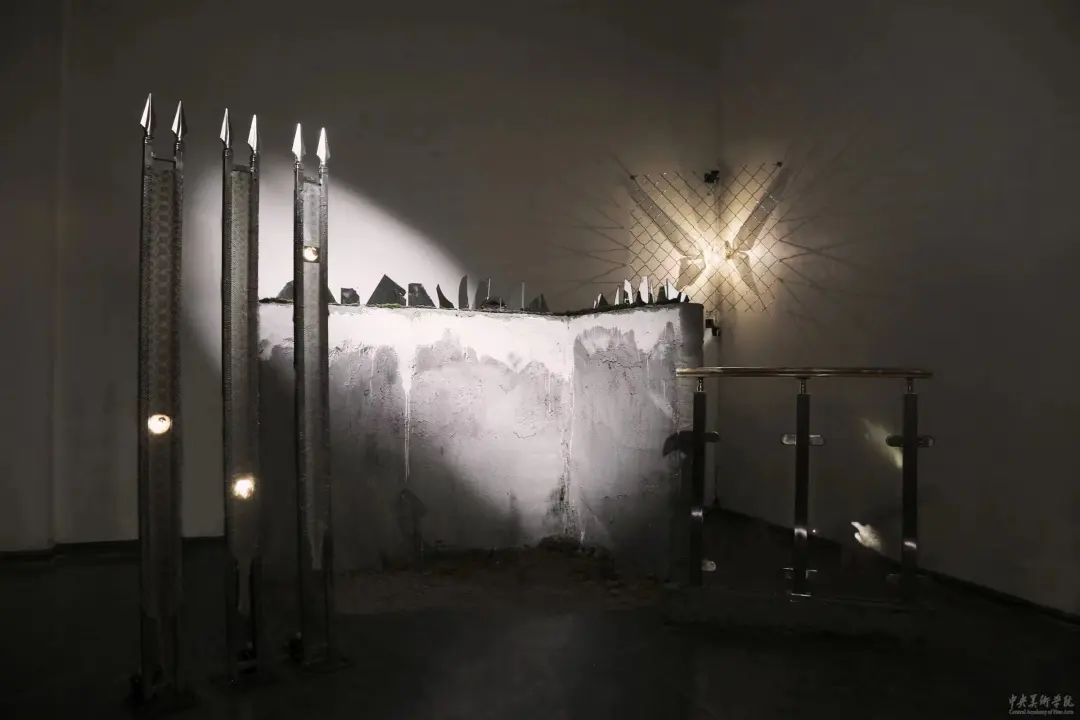
Chen Xu, “Fake Sleep”, Dimension variable, multi-channel video, film, snake slough, fence, glass, cement, broken mirror, hydrothermal installation, etc.
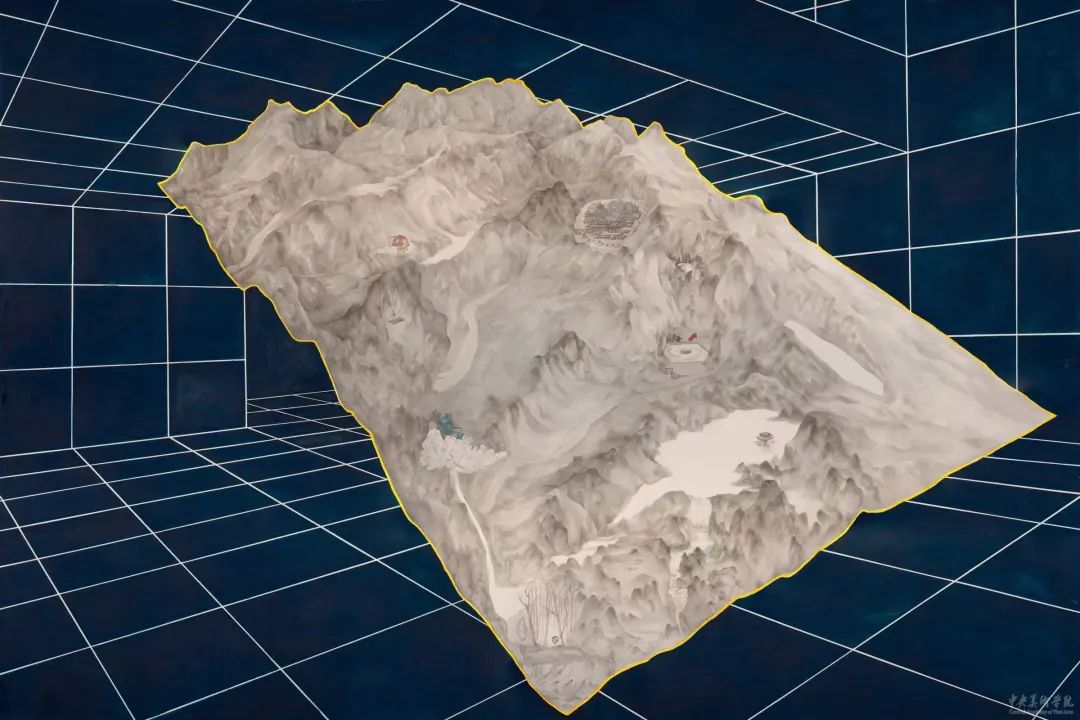
Wang Xiangjie, “How do we view seclusion now?”, 285×190cm, 2′34″, ink and color on paper , video , 46×23cm, rice paper, digital printing

Zhou Jingxian, “Foreign Land”, 100cm×100cm, Giclée print
What’s more interesting is that we can also see the complete process of how to implement the rural revitalization vigorously advocated by the Central Academy of Fine Arts. The graduates of CAFA continued their research direction over the past few years, combined with the human geography environment and resources of their hometowns, in the close-range and long-term investigation, the local thoughts fell into their creations, and the limitation was transformed into some possibilities in investigation and practice.

Li Yang, “Hometown: Meng’s Maison”, 240×240×210cm, Soil, wheat, tiles

Liu Xing, “No. 8 Tongxin Road”, 5㎡, 3 light boxes, map, 150×280cm, A5 coated paper, video 3′31″ & 4′22″, trade stall, light boxes, PVC floor stickers, LCD display, coated paper
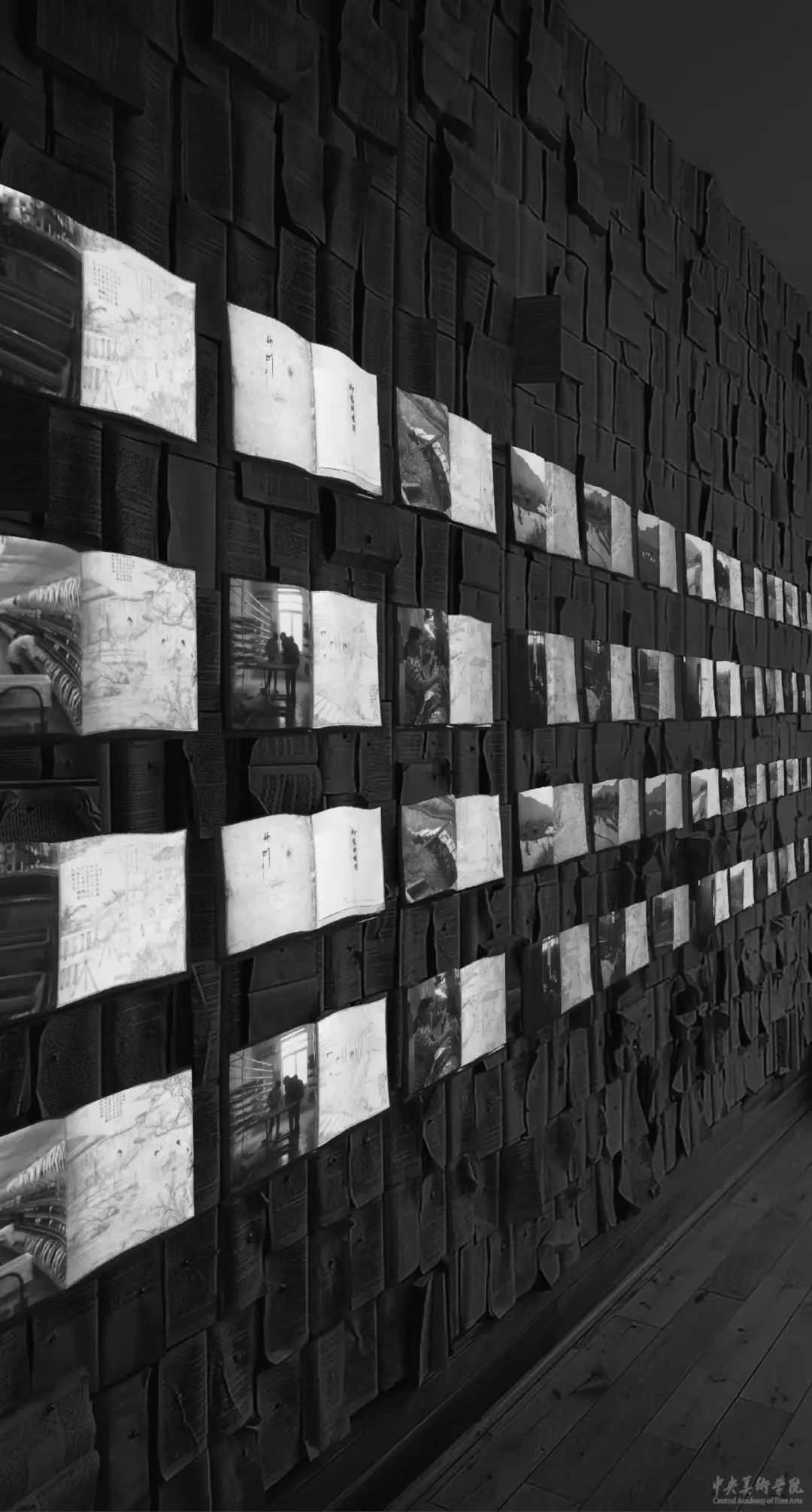
Dong Yayuan, “The Scroll of Plowing and Weaving”, Dimension variable, Multi-frequency color audio-visual installation
It is worth noting that it also includes the special creativity triggered by the special periods. These creations directly or indirectly inspired by the pandemic have appeared in the CAFA graduation seasons for three years. In this year’s graduation season, they still constitute the most closely interacting part of art and reality. Some of these creators chose to point directly to the present in their works, conveying the special life experiences, emotions and thinking that have been refreshed during the three years of life influenced by the pandemic to the outside world through their creations. Another tendency points to future exploration, imagination, creativity, and even an attempt to directly provide a solution in the post-pandemic era.

Tang Chao, “Blue Records of Pandemic”, Resin 16×23.5cm; Book 21×26cm, Mixed Media
Among them, the macroscopic thinking on social issues and the future occurs a lot in the graduation exhibition from the School of Design dominated by the integration of disciplines. The thinking about technology, teaching and even identity is derived from the graduates’ ability to observe and research the epochal environment in a special period, and finally express them in their works with the most diverse technical exploration and creative ideas.

Hu Bei, “1.2 meters”, Video 2′, physical size 20.3×25.7cm, Arduino, interactive sensors, silk, nylon, LED lights, flexible circuits and other mixed media

Cui Qunlin, “Virtual Ceremony Service | Birthday Live”, Dimensions variable, Video, software, wax, flour, cream
In previous years, the graduates of CAFA showed a tireless interest in the world, but this year they have become more crisis-conscious and urgent. Reflections and discussions on labor, food, disasters, environment, and war have repeatedly appeared in graduation creations in the form of multiple variations. Everyone who has seen the graduation exhibition find that though they were created at home with physical barriers, it does not prevent individual creators from being truly concerned about the distance, and in such a special period, this concern is even more urgent.
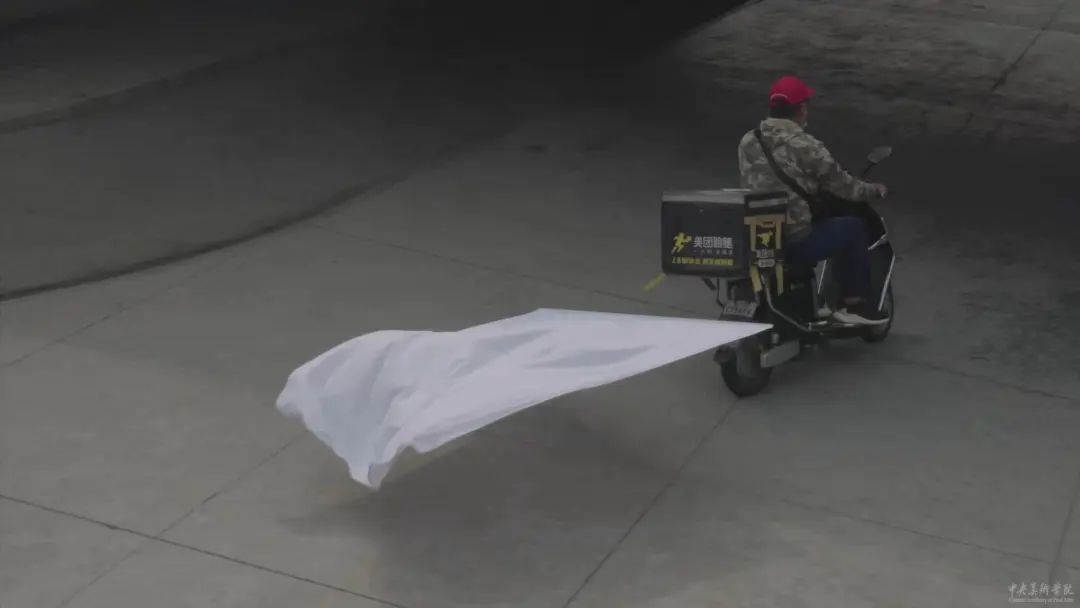

Zhao Hua, “White Paper”, 6′21″, Video
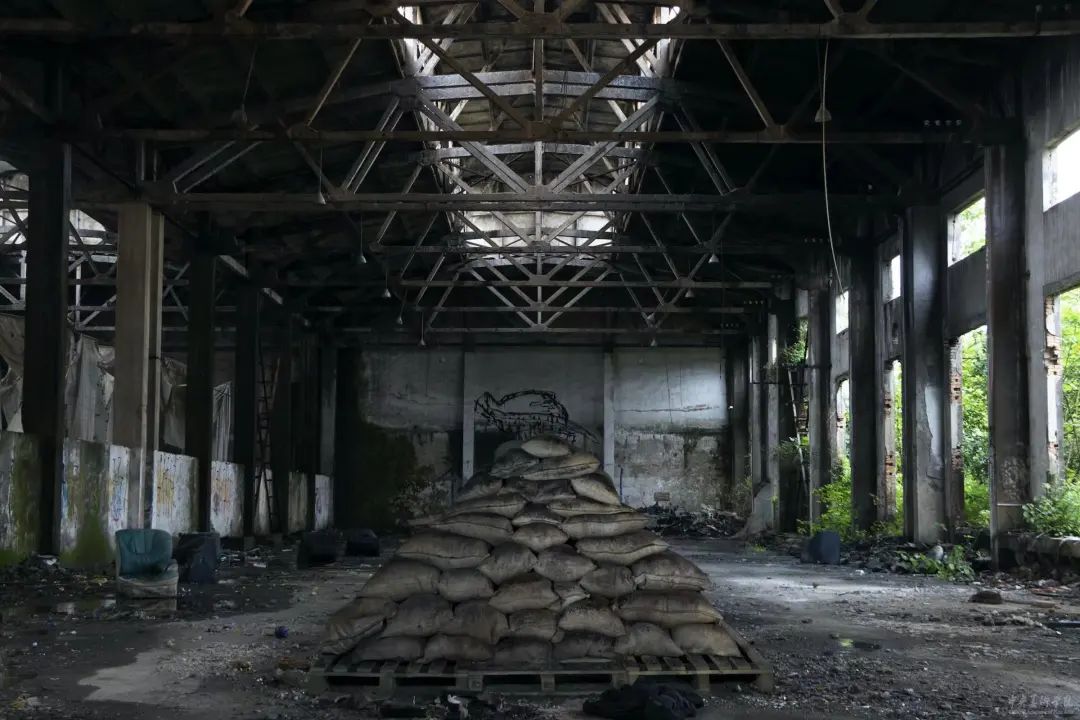
Wang Yueyang, “Fortress”, 300×300×200cm, Video duration: 1′20″, Sacks, coffee powder, installation and other mixed media
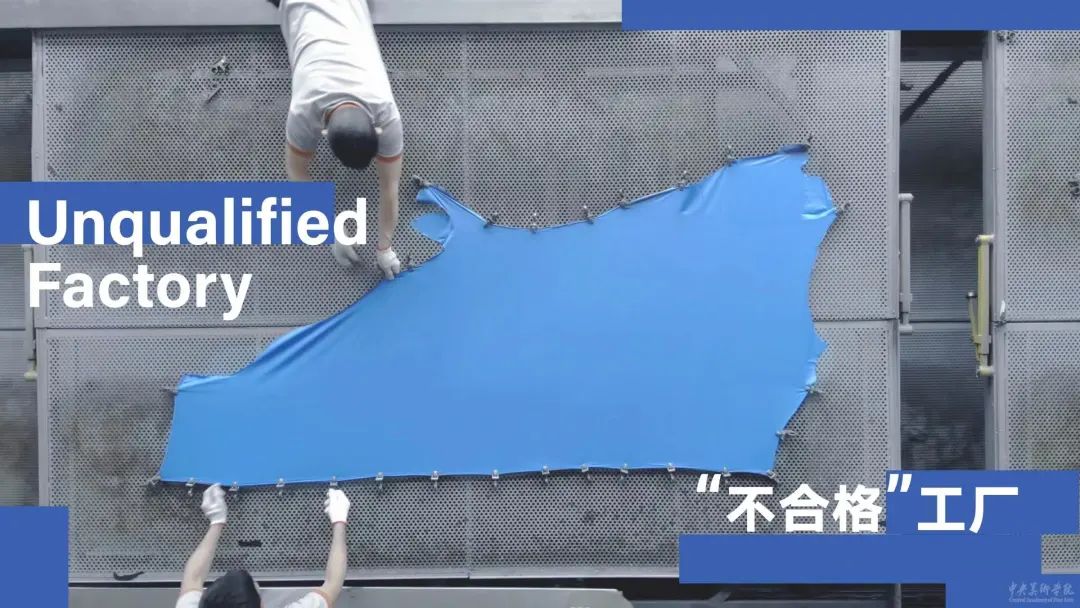
Ni Erlu, “Unqualified Factory”, 1920×1080px, Image
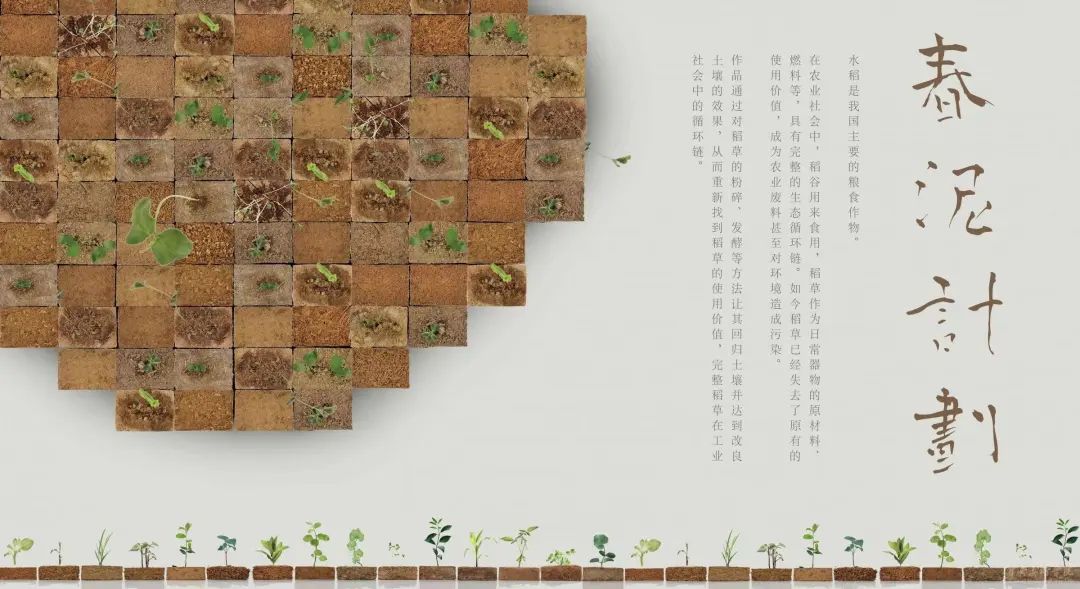
Zou Yueyi, “Spring Mud Project”, 15×10×5cm, Mixed media
While reviewing the 2021 Graduation Season, CAFA ART INFO once wrote an article and asked, “Are the Class of 2021 a luckier one?” The answer to this question finally came to fruition this year. The 2021 Graduation Season’s virtual and realistic exhibition mode makes it the most attractive graduation exhibition of CAFA last year. This year, for the 2022 Graduation Season, which is still influenced by the pandemic, changes and adaptation may be the theme that everyone, including graduates, is confronted with. For graduates, it may not be so important whether to adapt to online exhibitions or not. What is important is how to adapt to changes with hope, adapt to graduation, and adapt to the present and future that always seem capricious.
References:
[1] Chapter 27, The Doctrine of the Mean, translated by A. Charles Muller, 1991. Source: http://www.acmuller.net/con-dao/docofmean.html.
[2] Chapter 27, The Doctrine of the Mean, translated by James Legge, 1861. Source: http://classics.mit.edu/Confucius/doctmean.1b.txt.
[3] Source: https://m.thepaper.cn/baijiahao_18265985.
Text by Mengxi, ed. And trans. by Sue/CAFA ART INFO
Images and Texts Courtesy of the Artists




























